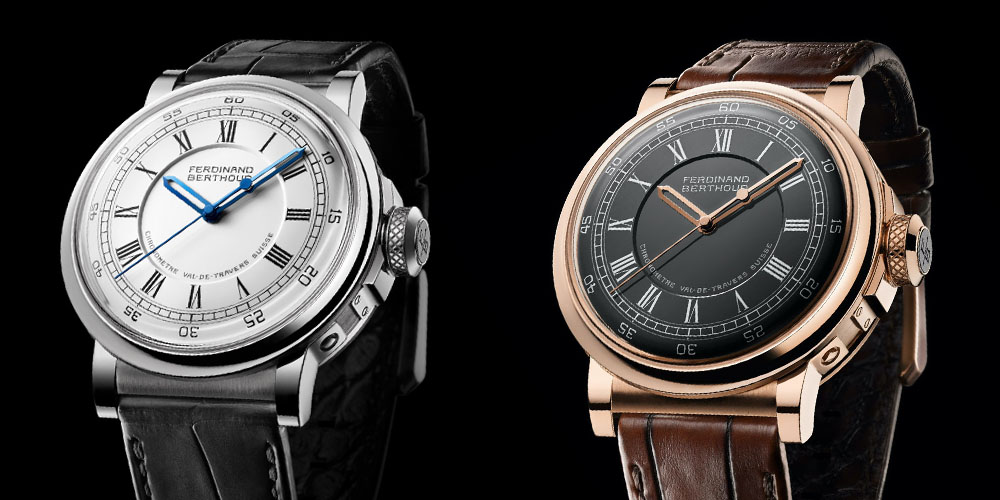Ferdinand Berthoud: Chronomètre FB 2RE
24 August 2020To celebrate the 250th anniversary of the title “Clockmaker and Mechanic by appointment to the French King and Navy” obtained by Ferdinand Berthoud in 1770, the Brand presents a new emblematic collection: the Chronomètre FB 2RE. This model pays tribute to the genius of Ferdinand Berthoud, as revealed in the extraordinary Marine Clock N°6. Inspired by its architecture and design, it introduces a new movement, the Calibre FB-RE.FC with remontoir d’égalité.
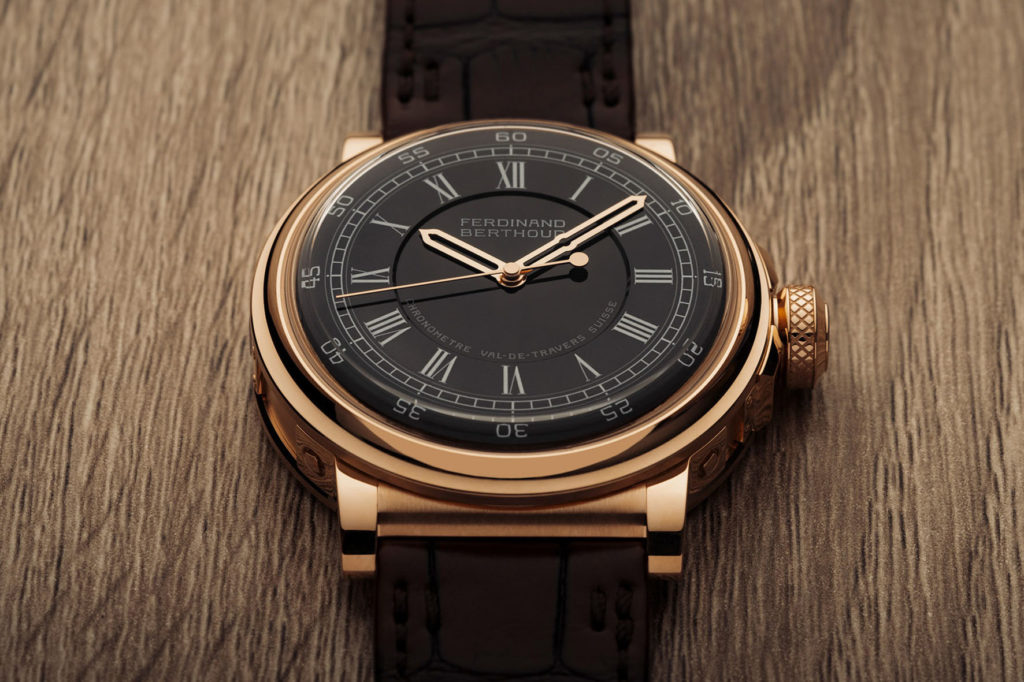
FROM THE MARINE CLOCK No. 6 TO THE CHRONOMÈTRE FB 2RE
As described by Ferdinand Berthoud in his Traité des horloges marines, published in Paris in 1773, the mechanisms of Marine Clocks are protected by a cylindrical copper drum, itself held in a horizontal position by a gimbal suspension system that he invented.
The case of the Chronomètre FB 2RE picks up the shape of these Marine Clocks and this modular construction. The movement is installed in a cylindrical container made of 18-carat gold and water-resistant to 30 metres. Short, tapering all-of-piece lugs are solidly secured to the case by stylised bolts and ensure the Chronomètre FB 2RE smoothly moulds the contours of the wrist.
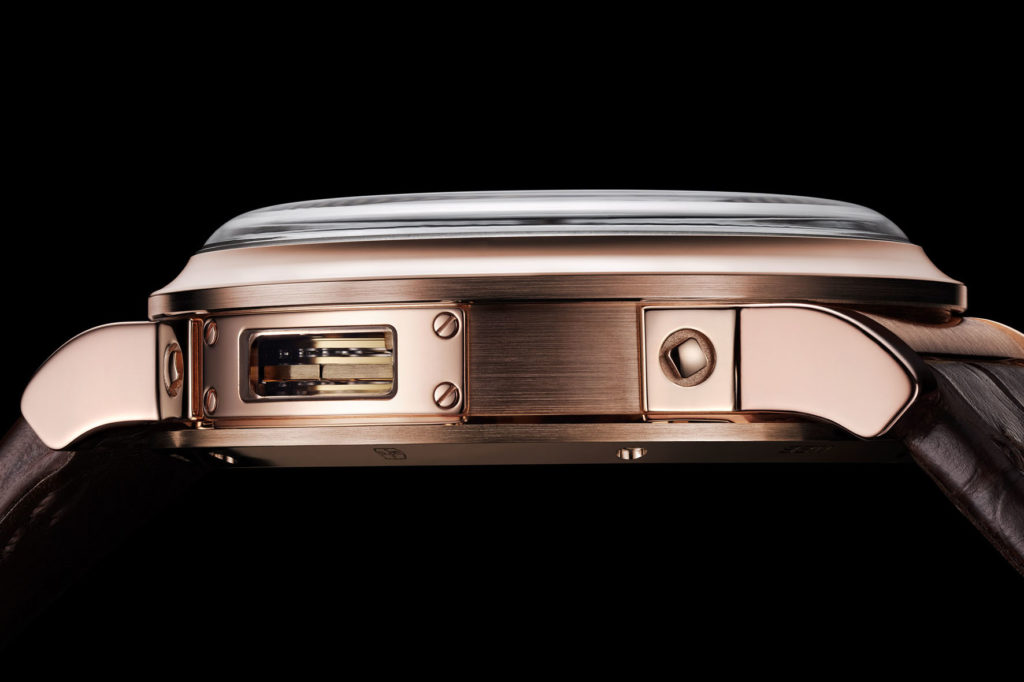
A large panoramic window appears at 10 o’clock along the case middle in a screw-down frame and reveals the movement’s pillar-type architecture, as well as the barrel and its chain.
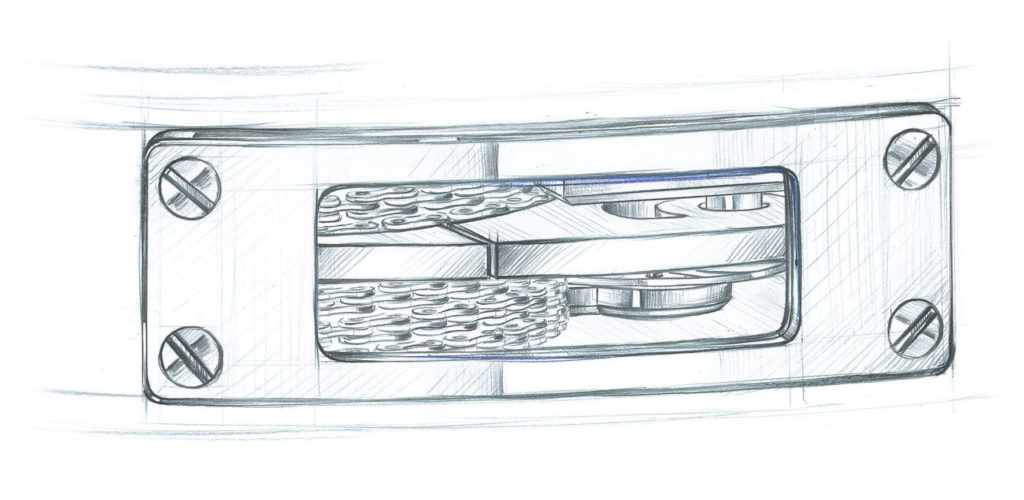
The round case, 44 mm in diameter and 14 mm thick, is enhanced by a curved bezel fitted with a strongly domed “chevée” glareproofed sapphire crystal. The caseback is also fitted with a sapphire crystal enabling one to admire the incomparable beauty of the movement.
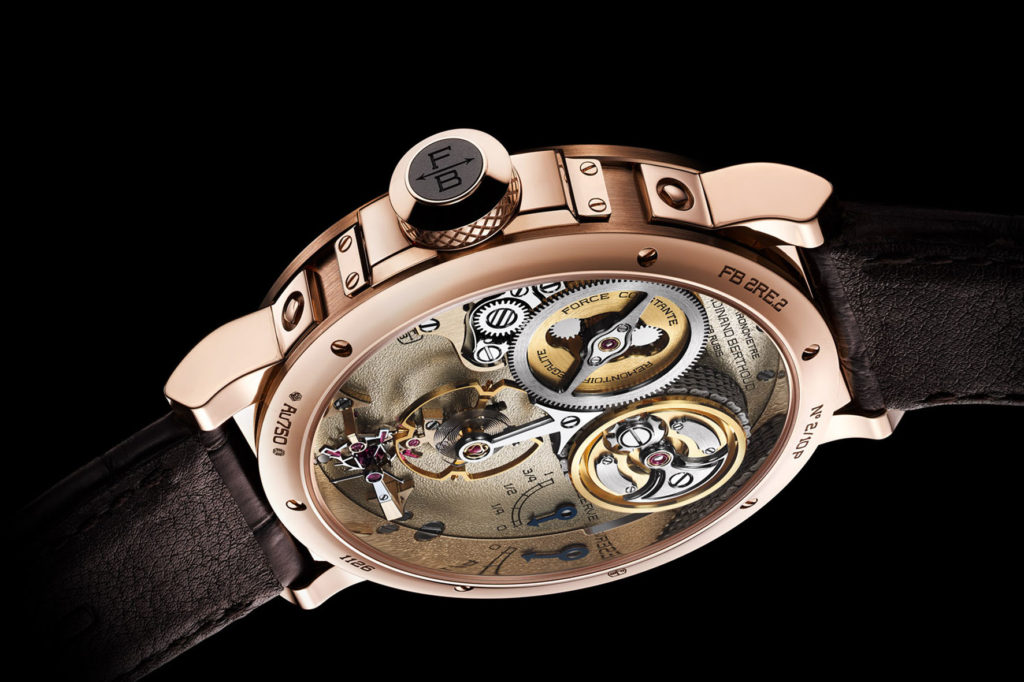
The crown, integrated into the case middle by an applied screw-in crown guard, it features a dynamometric system that disengages as soon as the barrel is fully armed.
THE DIAL
In order to facilitate reading off the hours and minutes during sea voyages, Ferdinand Berthoud had designed a two-tiered dial with two types of graduations for his Marine Clock No. 6: in the centre, the hours indications in Roman numerals stand out from the minutes circle in Arabic numerals appearing on the circumference.
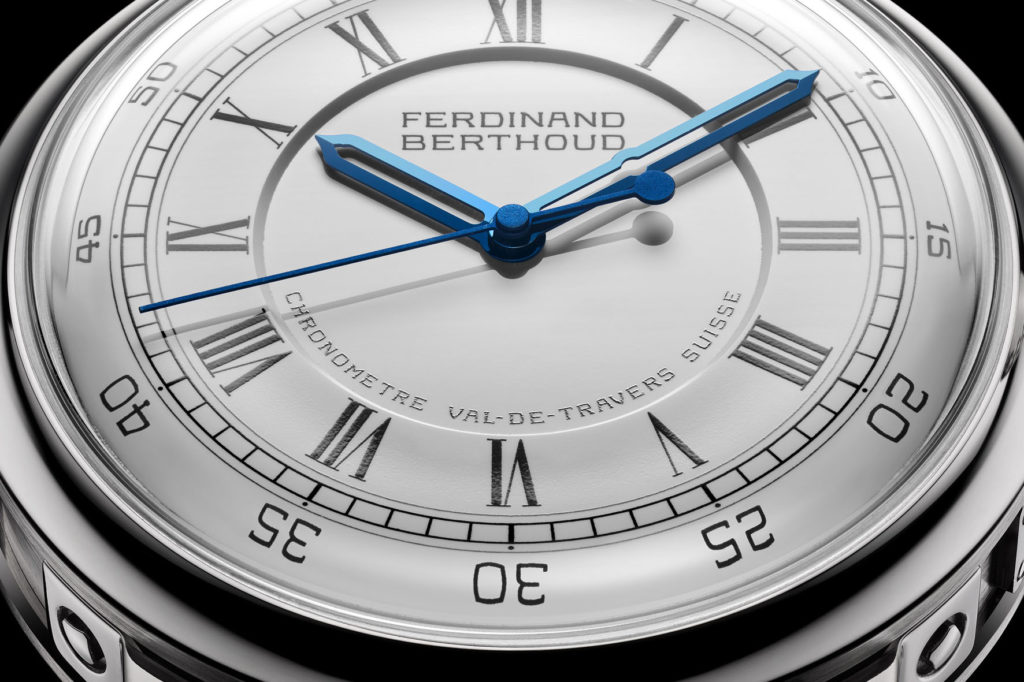
The dial construction of the Chronomètre FB 2RE follows this same principle. The dial is composed of two elements: one is domed, located on the periphery and designed to bear the graduated scale; while the second, positioned centrally and slightly lower, is a flat medallion. Both are made of grand feu enamel. Their base is made of non-magnetic steel, a choice that requires perfect compliance with the required temperatures and extremely precise firing times in order to avoid any distortion, while also preventing the excess thickness resulting from the traditional counter-enamel.
The inscriptions on the dial are also crafted in painted enamel, which requires an additional firing in the kiln. Roman numerals for the hours, Arabic numerals for the minutes and a rail-track minute circle appear alongside the markings and the original inscription “Chronomètre Val-de-Travers Suisse”. The dial of reference FB 2RE.1 is crafted in white enamel with black inscriptions, while the dial of reference FB 2RE.2 features deep black enamel punctuated by white markings.
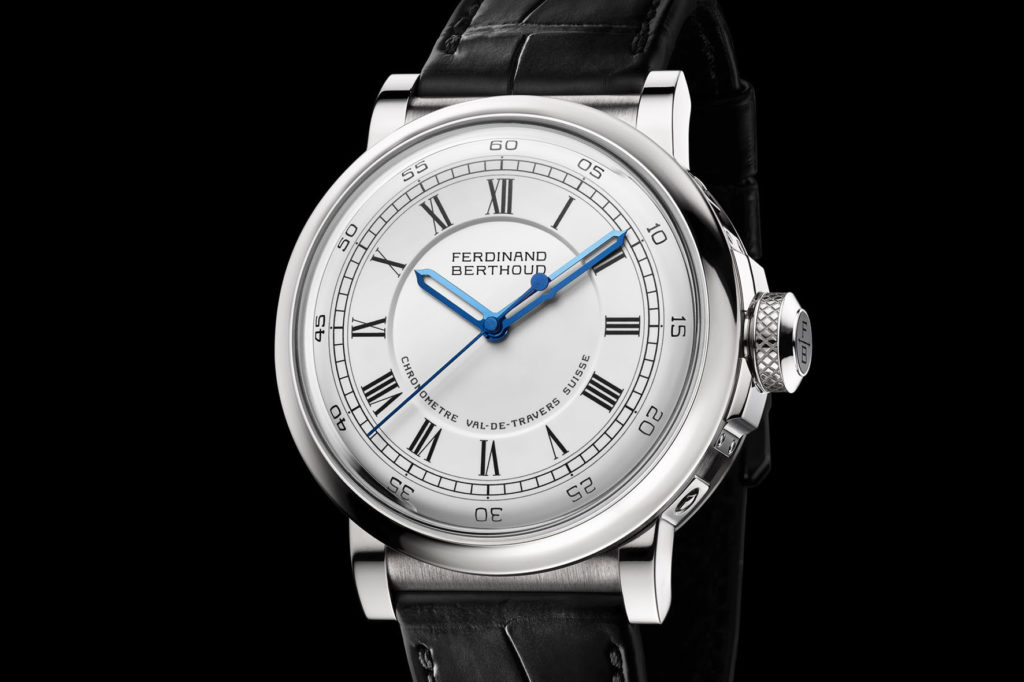
For the hours and minutes, the Chronomètre FB 2RE is equipped with dagger-type hands in 18-carat gold featuring a hollowed-out design reminiscent of the hands of the Chronomètre FB 1, while the shorter hours hand remains flush with the central dial medallion. The minutes hand is highlighted by a bulge half-way along and extends to the base of the minute circle. The extremely thin titanium seconds hand weighs just 0.01 grams. This lightness helps to lighten the burden on the remontoire.
Finally, the arrow-shaped CVD-blued 18-carat power-reserve hand on the back of the movement is visible through the wide sapphire crystal case-back.
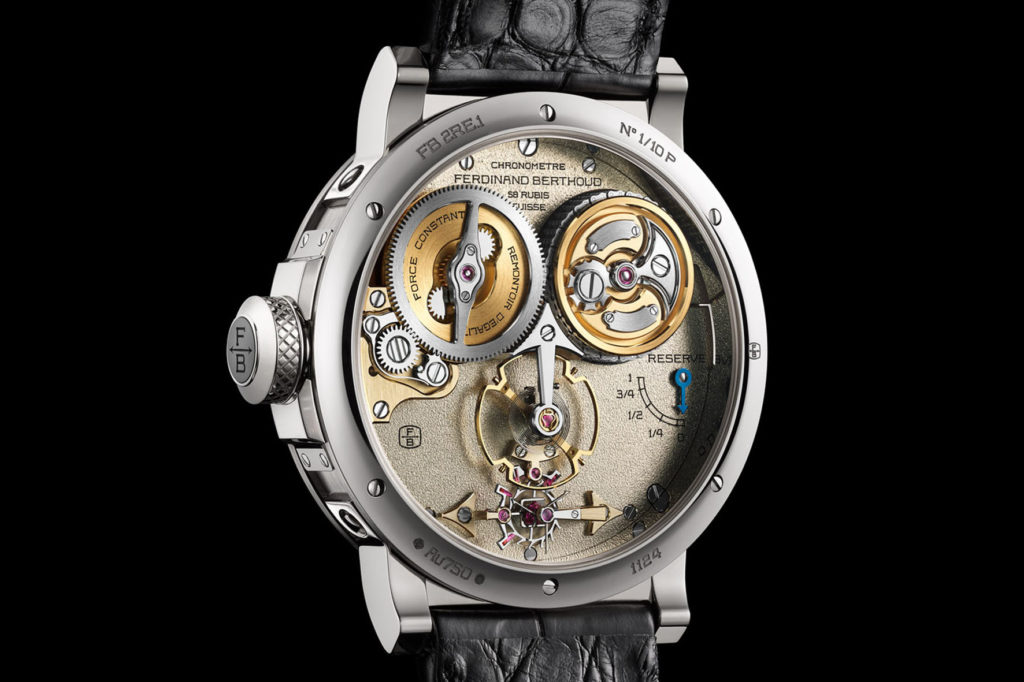
THE CALIBRE FB-RE.FC
The mechanical movement FB-RE.FC is one of the rare examples to feature fusee-and-chain transmission, serving to ensure constant force for the escapement. It acts like an infinitely variable automatic reduction gearbox.
The torque delivered by the barrel of a watch movement naturally varies according to the degree of winding. In this type of transmission, when the movement is fully wound, the chain is completely wrapped around the small end of the spindle-shaped fusee and the mainspring is at maximum power. This force dwindles in the course of time, as the chain coils around the drum, moving from the small to the large end of the fusee.
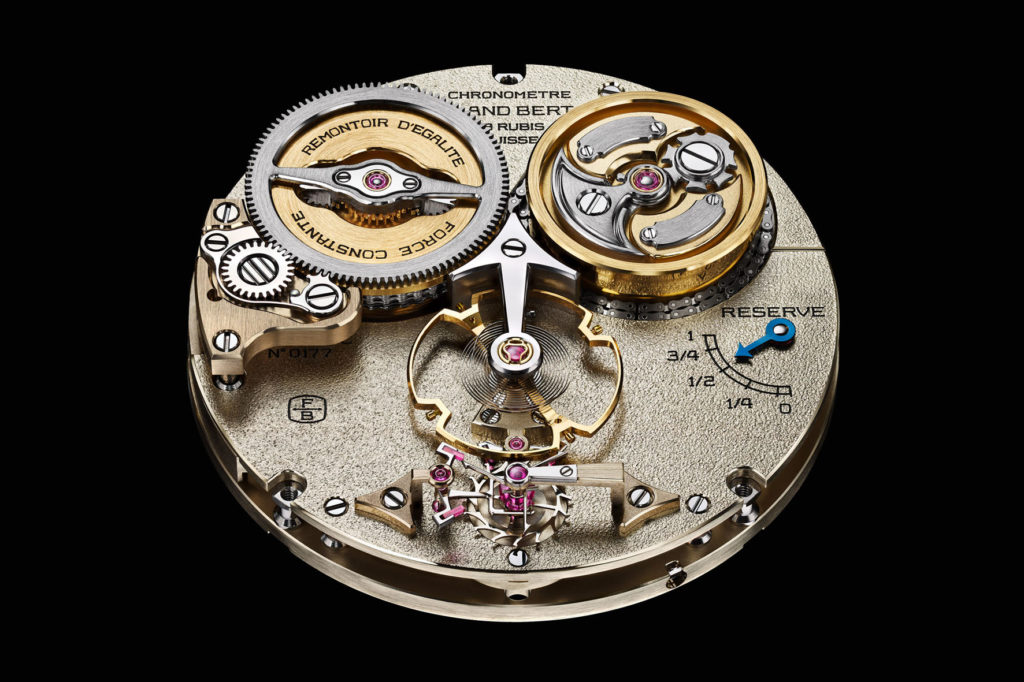
The variation in the diameter of the fusee compensates for the reduction of the mainspring torque. The gear train thus receives a constant supply of energy, a pre-filtering of the energy arriving at the remontoire. The distinctive nature of the FB-RE.FC calibre lies in the fact that its fusee is reversed, and especially that its barrel and fusee are both suspended – meaning they are held on one side only, to the mainplate. This spectacular construction is patented and serves to save a few precious millimetres.
Exceptionally, the FB-RE.FC calibre, in addition to the constant-force mechanism, is equipped with a one-second remontoire visible on the back of the movement. It is one of the most complex torque regulation systems in the history of time measurement.
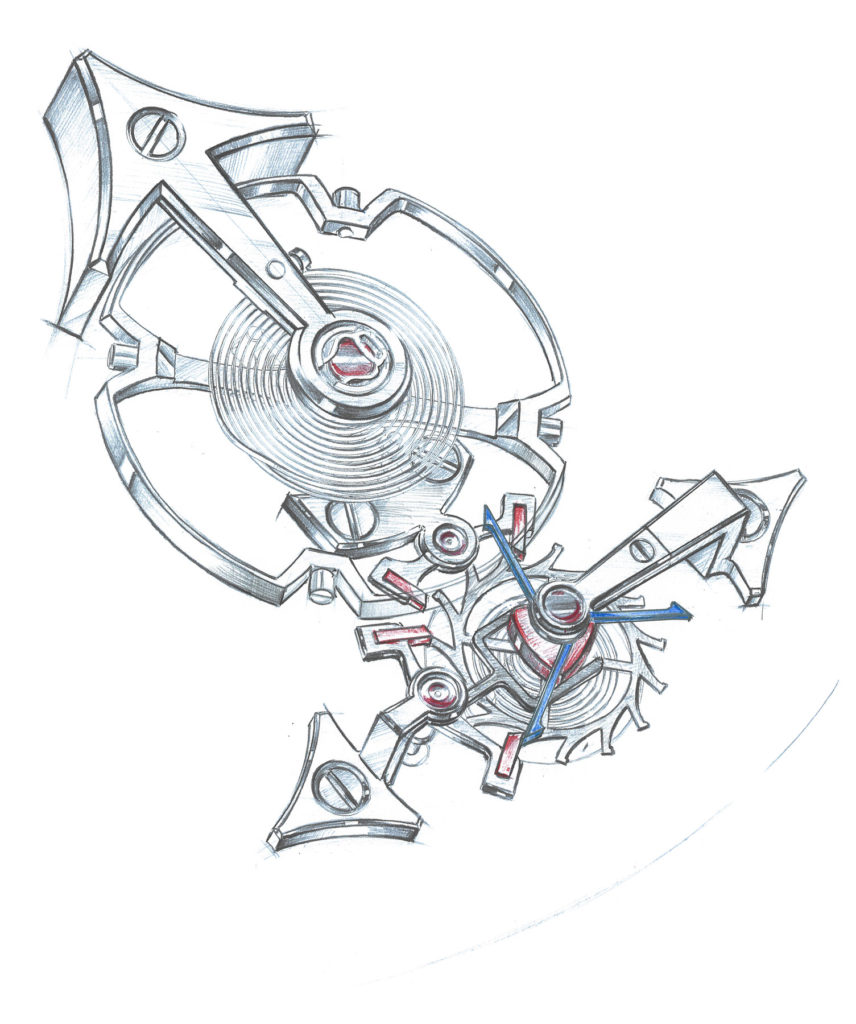
The Chronomètre FB 2RE remontoire is of a distinctive type in that it is fitted concentrically with the escape-wheel and thus directly connected to the escapement. This device is designed to store a small amount of energy in a secondary hairspring, playing a driving rather than a regulating role. It delivers its force to the balance via the escapement at such short intervals that the variation of the force in the hairspring is not taken into account. In this case, Chronométrie Ferdinand Berthoud has opted for a one-second release.
The force from the barrel is transmitted to the remontoire spring by means of a triangular ruby cam. When the escape-wheel has moved 2.5 teeth forward, the ruby cam releases the stop lever, that of the remontoire, and allows the driving force to enter the remontoire system. It is then charged for the next second.
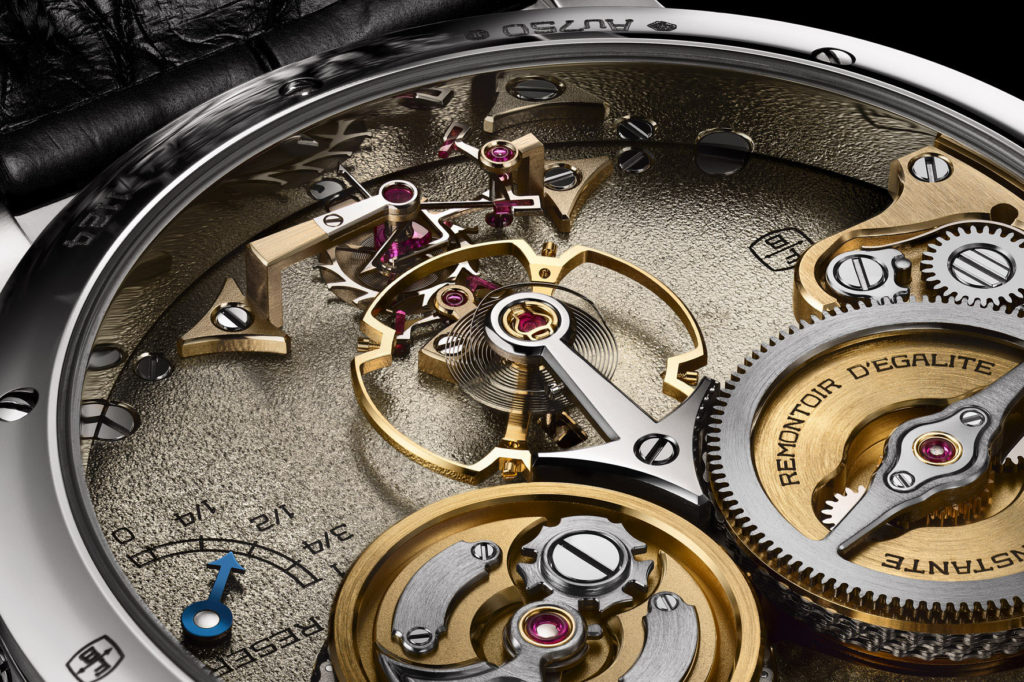
The escape-wheel pinion is connected to the stop wheel and marks off the seconds. The entire assembly is connected to the central seconds hand and enables the Chronomètre FB 2RE to display true seconds, or deadbeat seconds, like marine chronometers or regulator-type longcase clocks. To enhance the accuracy of the display, the connection between the escapement pinion and the deadbeat seconds hand is achieved by means of a special deadbeat seconds mechanism.
The Chronomètre Ferdinand Berthoud FB 2RE with remontoir d’égalité is available in two 10-piece limited and numbered editions: one in 18-carat rose gold with a black enamel dial and the other in 18-carat white gold with a white enamel dial. (Price CHF 210.000)
